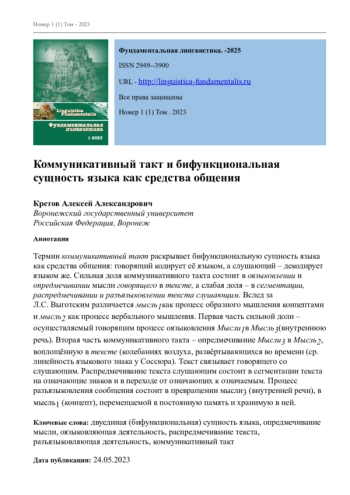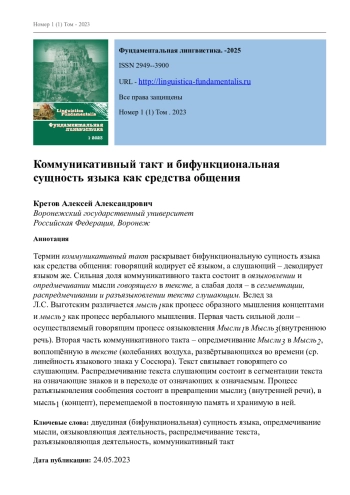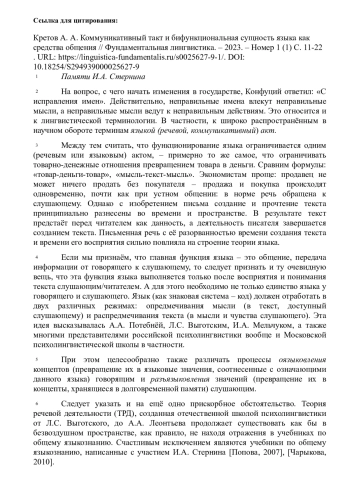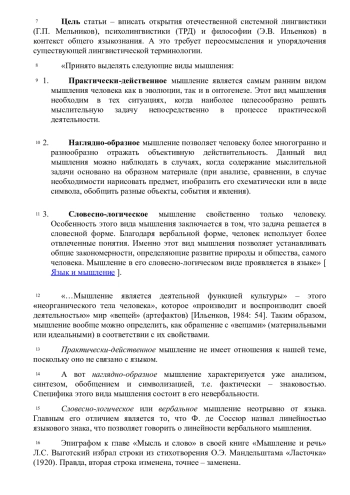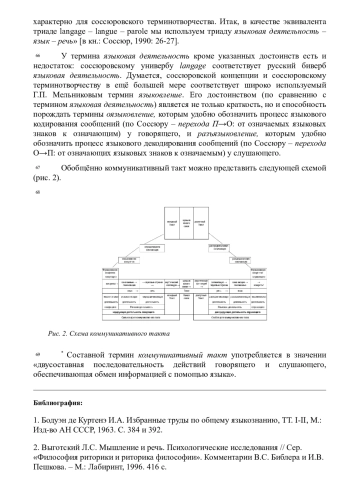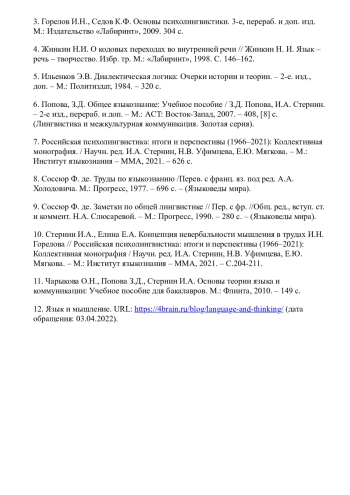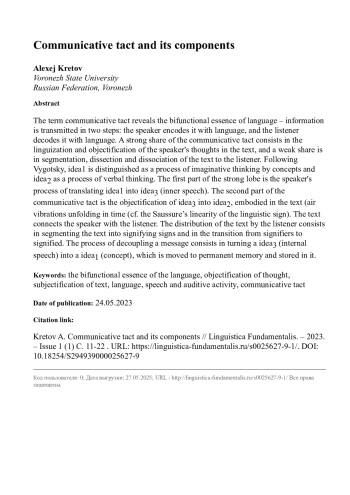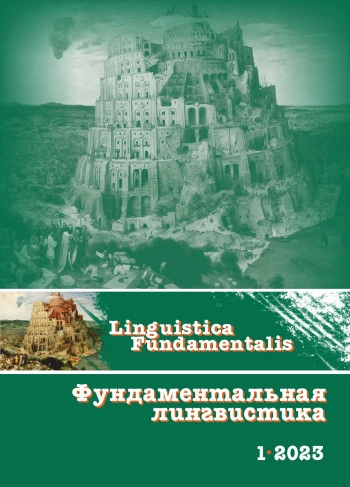Термин коммуникативный такт раскрывает бифункциональную сущность языка как средства общения: говорящий кодирует её языком, а слушающий - декодирует языком же. Сильная доля коммуникативного такта состоит в оязыковлении и опредмечивании мысли говорящего в тексте, а слабая доля - в сегментации, распредмечивании и разъязыковлении текста слушающим. Вслед за Л. С. Выготским различается мысль1как процесс образного мышления концептами и мысль2 как процесс вербального мышления. Первая часть сильной доли - осуществляемый говорящим процесс оязыковления Мысли1в Мысль3(внутреннюю речь). Вторая часть коммуникативного такта - опредмечивание Мысли3 в Мысль2, воплощённую в тексте (колебаниях воздуха, развёртывающихся во времени (ср. линейность языкового знака у Соссюра). Текст связывает говорящего со слушающим. Распредмечивание текста слушающим состоит в сегментации текста на означающие знаков и в переходе от означающих к означаемым. Процесс разъязыковления сообщения состоит в превращении мысли3 (внутренней речи), в мысль1 (концепт), перемещаемой в постоянную память и хранимую в ней.
The term communicative tact reveals the bifunctional essence of language - information is transmitted in two steps: the speaker encodes it with language, and the listener decodes it with language. A strong share of the communicative tact consists in the linguization and objectification of the speaker’s thoughts in the text, and a weak share is in segmentation, dissection and dissociation of the text to the listener. Following Vygotsky, idea1 is distinguished as a process of imaginative thinking by concepts and idea2 as a process of verbal thinking. The first part of the strong lobe is the speaker’s process of translating idea1 into idea3 (inner speech). The second part of the communicative tact is the objectification of idea3 into idea2, embodied in the text (air vibrations unfolding in time (cf. the Saussure’s linearity of the linguistic sign). The text connects the speaker with the listener. The distribution of the text by the listener consists in segmenting the text into signifying signs and in the transition from signifiers to signified. The process of decoupling a message consists in turning a idea3 (internal speech) into a idea1 (concept), which is moved to permanent memory and stored in it.
